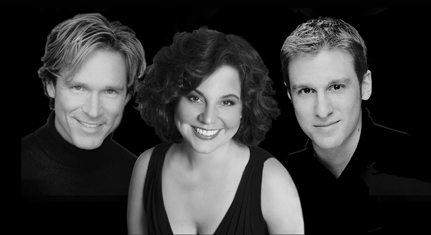The Mirror Visions Ensemble in Review
The Mirror Visions Ensemble in Review Works by Russell Platt and Tom Cipullo Bargemusic January 29, 2011It is a good idea to arrive at concerts early, not only so that one can have time to read the program notes, but also in order to make the transition from the hectic life of the city, to place a “cordon sanitaire” around the event being attended. This is especially important when attending events at Lincoln Center or at the Carnegie Halls, as one needs to decompress after a ride on the NY Subway. My favorite pre-concert “cordon sanitaire” begins just after exiting the subway at the York Street Station of the F train. One then walks Down Under the Manhattan Bridge Overpass through DUMBO. There are fleeting views of the Manhattan Bridge on the right and soon parts of the Brooklyn Bridge come into view. After a right turn down Old Fulton Street, one soon arrives at the East River. Ahead is the Manhattan skyline, to the right the span of the Brooklyn Bridge, and to the left, moored to the Brooklyn shore, is home of Bargemusic. Floating in the East River, this one of our city’s most unusual and pleasant chamber music venues.
Founded in 1992 The Mirror Visions Ensemble (Tobé Malawitsa, Artistic Director) has commissioned more than seventy vocal chamber music works. Given the magnificent performances we heard tonight from soprano Vira Slywotzky, tenor Scott Murphree, baritone Jesse Blumberg and pianist Alan Darling, contemporary composers are very fortunate to have such skilled and dedicated performers championing their music. Tonight’s concert featured two of The Mirror Visions Ensemble’s commissions.
The first half was devoted to Russell Platt’s “From Noon to Starry Night: A Walt Whitman Cantata.” This setting of ten Whitman poems was written in a spiky but not painfully dissonant harmonic style, often leavened by major triad final chords. It began with two trios which were sung with perfect intonation and rhythmic clarity. The first was fairly tonal, but spiced by added “wrong notes” in some of the chords, while the second was a waltz. Each of the following solo movements was performed with attention to the meaning of the words and with impeccable diction. I found the consonant opening of the fifth movement, “I Saw in Louisiana a Live-Oak Growing,” quite beautiful.
After intermission we heard Tom Cipullo’s “A Visit with Emily,” settings of letters and poetry of Emily Dickenson and letters of T.W. Higginson. As did Mr. Platt, Mr. Cipullo spoke about his work before it was performed. I usually dislike these pre-performance-spoken- program-notes, but Mr. Cipullo’s were most informative, quite funny, and very well delivered. Most interesting was the statement that his settings were not meant to augment or to clarify the meaning of the poems, but to express his reaction to them. Mr. Cipullo’s music has none of the retro-consonant elements employed by Mr. Platt, and it never wavers from an astringent harmonic language. If there was a “retro” aspect to his music, it was his skillful use of use of earlier musical devices, an aspect of this work I enjoyed very much. Movements three (sung by Mr. Blumberg,) four (sung by Mr. Murphree,) and five (sung by Ms. Slywotzky) were based on poems which had to do with fame. Movement six combined the melodies of these three songs, a devise called a quodlibet. It was brilliantly performed by the three soloists and pianist Alan Darling. In later movements we heard a catch, a chaconne, a passacaglia and another quodlibet.
And after hearing fine performances of skillful settings of great poetry in a unique venue, I could reenter reality by retracing my steps under those two great bridges mentioned in paragraph one. Only in New York!

